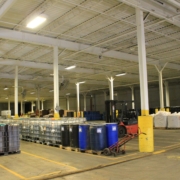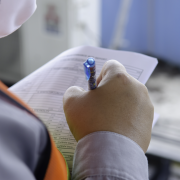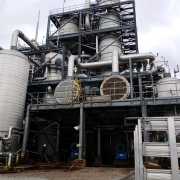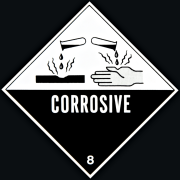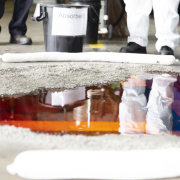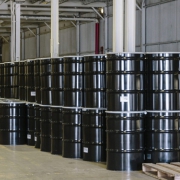What Is a Waste Management System?
Waste creation is inevitable for every human and company, but its disposal should be managed to prevent threats to public health and the environment. A great way to properly manage your waste is by hiring a proven waste management company. These specialized companies can implement their waste management system to provide crucial benefits and make the process of overlooking waste through its treatment or disposal headache free.
WHAT IS A WASTE MANAGEMENT SYSTEM?
A waste management system is an organized method for controlling and inventorying waste that has been created as a byproduct, is no longer needed for its original use, or has since expired. It is a specific checks and balances system to ensure the facility is properly accumulating, storing, auditing, and disposing of waste/materials. Each company should have a system, but some may need help due to the complexity of what they are creating as a by-product.
WHAT ARE THE BENEFITS OF A WASTE MANAGEMENT SYSTEM?
Having a waste management system comes with many benefits, including:
1. EFFICIENCY AND ORGANIZATION
There are many types of wastes that fall into specific categories and follow different types of regulations. In turn, this means that controlling, inventorying, and overall managing them can cause confusion and possible issues if there is no system in place. With a good waste management system, companies can use their resources to make sure that this is an organized process and completed in a efficient manner.
2. SAFETY
Waste, especially hazardous waste, can be dangerous to public health and the environment. By properly managing and storing these materials, there is less chance that an accident may occur. This also prevents future issues in relations to public health and environmental dangers if all the right steps are taken.
3. REGULATORY COMPLIANCE
By having a waste management system, companies can better avoid regulatory issues. There are many departments that relate to waste management, including the Environmental Protection Agency for environmental protection and leak prevention, Occupational Safety and Health Administration for personnel safety and prevention of exposure, and Department of Transportation for safe transportation. Complying with the rules and regulations of these departments is extremely crucial, and a waste management system is able to balance all these different departments and cater to their regulations.
4. HOUSE CLEANING
A waste management system prevents clutter or forgotten material to fall to the wayside, which is harmful and doesn’t fully solve the problem of disposing of all waste. Having a clean facility is also crucial in each of the three benefits (efficiency and organization, safety, regulatory compliance) listed above.
WHY HIRE A WASTE MANAGEMENT COMPANY?
While a waste management system can be achieved on your own, using a waste management company enhances the benefits listed above and ensures the best job is done. Read below to see why hiring a waste management company can benefit your business.
- They are familiar with rules and regulations. There are numerous regulations regarding waste management and these can be difficult to navigate, so having a company that understands these is extremely important.
- When a regulation is added, changed or updated, they are on top of it. Regulations are ever-changing, which can lead to many issues. A waste management company avoids larger issues with its knowledge of the current regulations. If a company chooses not to use a waste management system, a new rule can get lost while juggling other business aspects and that can really harm the company.
- Experience is crucial, and they’ve got it. A company with experience knows how to better manage specific waste situations. They’ve had to deal with many different scenarios if they have a lot of experience, so when yours arises, they will already know what to do. When you’re searching for a waste management provider, make sure to look for a company with experience and a positive track record.
- Save the time of building relationships with disposal facilities. Having a positive relationship with disposal facilities is very helpful for scheduling and timely disposal. Having this relationship benefits both sides, but creating it can take some time. By using a waste management company with established relationships, they’ll help you to find a good date and time for disposals.
- They make it as easy as possible for you. The waste management business can be unattractive for most people. Hiring a waste management company that provides turnkey services can prevent bigger issues in the future and allow you to focus on your business with worry-free ease.
ENVIROSERVE’S PROPRIETARY WASTE MANAGEMENT SYSTEM
EnviroServe utilizes a proprietary waste management system for tracking and managing waste amid hazardous waste regulations. For more information about EnviroServe’s waste management system and services, contact us or call (800) 488-0910.
